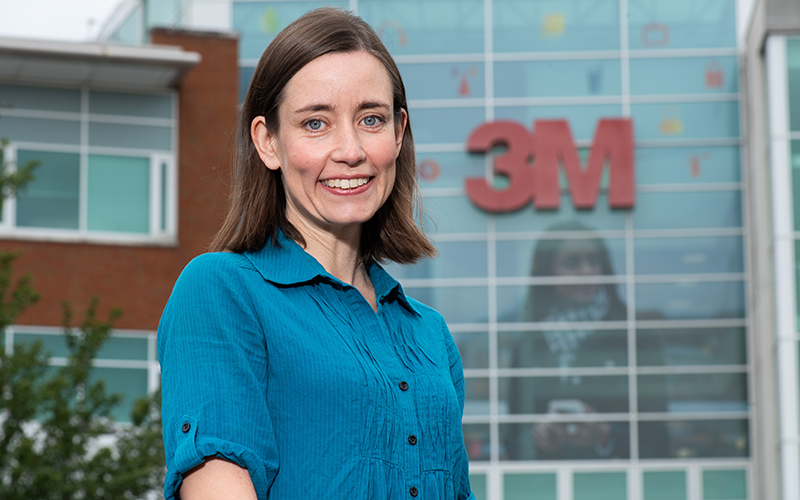The shortfall of STEM workers is costing UK businesses billions and its vital we close this gap. There remains an annual demand for 124,000 engineers and technicians with core engineering skills across the economy. Sarah Chapman, Technical Leader & Advocate for Diversity in STEM at 3M spoke to Student Circuit about the importance of diverse role models in STEM, key barriers to entry and how technology corporations can make a difference.
From interviewing a fair few people over the past year, I’ve realised the majority can recall the exact moment where their interest in STEM was sparked, usually before they’re mid-teens.
Sarah is no different: “I had this Chemistry teacher, and she was amazing. She told us that she used to work in industry for quite a big fruit cordial company as a formulation chemist. That’s kind of where I found out if you apply science, it’s interesting to me. that was the catalyst for me.”
Having chosen art related a levels, Sarah decided to teach herself the Maths AS level to be able to get into university. Successfully, Sarah went on to study BSc Chemistry at Southampton University.
“I’m passionate about making sure other people don’t have to go through the same convoluted route, that they can see science as relating to them and they’ve got role models from an early age to inspire them. I passionately believe in role models and how important diversity of role models is,” said Sarah.
The importance of role models
It’s vital that as many people get involved in inspiring and educating the next generation as possible.
Some people believe that to be a role model you must do something huge or embark on a big project. But you can be a model just by sharing your story. Whether that’s through sharing a positive post on social media, giving a talk in a school or mentoring, the beauty of being a role model is no matter how you get involved, you can make a difference.
“I think the more people we can encourage to be role models the better,” said Sarah.
The challenge is, one person can go to a school and share their story to a year group of 90 students, one or two will likely connect and we might see a big difference. However, if it is just one person doing this work, you won’t capture the rest of the audience.
“You need to find the things people are passionate about and interest in and we stand more chance of doing that if we have a wider range of role models,” Sarah said.
Barriers in STEM
3M’s State of Science Index 2022 discovered that access and affordability are real barriers to people pursuing a STEM education. This is a clear cause for concern and needs looking at closely. If we want true diversity, we need to make sure these barriers are broken.
What can big tech corporations do? Tech companies should prioritise creating resources for children to get involved at an early age, host programs including internships, summer camps and workshops, and provide grants and scholarships to underrepresented students.
Companies are in an excellent position to make a difference and bridge the gap between education. Whether it be through curating campaigns, working directly with students and teachers, celebrating success or funding tuition, there are plenty of ways to get involved.
Stereotypes also play a huge role, formed whilst children are still at primary school. “We need to do a better job at showing young people someone slightly different to the stereotypical scientist they’d usually imagine,” explained Sarah.
Something else Sarah is passionate about is tackling the perception that science is difficult. As an education system this is something that needs to be looked at.
Tapping into the arts
In most tech roles, you also need soft skills. “When I’m hiring, I look for people who are curious, collaborative and have a passion. If you have these things, you can usually teach the rest,” explained Sarah.
We need to abolish the idea that technology and the arts are mutually exclusive. When you’re in the workplace, it doesn’t translate in a way that you’re either into arts or technology. There are so many jobs that have an overlap on these skills.
“I think actually, the industry benefits from people who studied media and computer science because they’ve got some technical skills as well as other skills they can use it different roles,” added Sarah.
We also need to get rid of the idea that boys are more capable at STEM subjects than girls. This is again where role models come in.
Parents, teachers, friends, and family also make a huge difference. Sometimes, people can think they need to be able to understand STEM to be able to spark that interest in those around them. Actually, all you need is to be able to encourage problem solving and curiosity. Its vital to support parents and teachers with resources and positive stories with better examples of diverse role models to enable them to play their true part.




